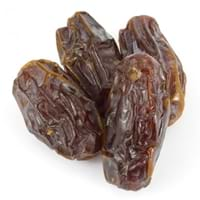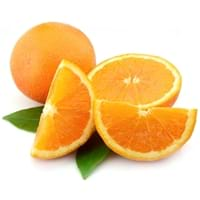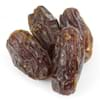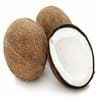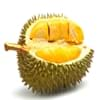Health Benefits
Cancer prevention, Cures gastro-intestinal troubles, Diarrhea treatment, Heart care, Heat stroke treatment, Improves muscular strength, Prevents constipation, Prevents nerve damage, Strengthening of bones
Arthritis treatment, Cancer prevention, Heart care
General Benefits
Boosts immune system, Maintains healthy cholesterol level, Strengthens bones
Anti-inflammatory properties, Cures cough, Cures fever, Digestive aid, Healing of wounds, Maintains healthy cholesterol level
Skin Benefits
Anti-aging benefits, Brightens and lightens complexion, Reduces wrinkles, Treatment of skin diseases
Anti-aging benefits, Brightens and lightens complexion, Reduces wrinkles, Treatment of dark spots
Hair Benefits
Prevents hair loss, Promotes longer and healthier hair, Protects hair, Regulates hair growth
Promotes longer and healthier hair, Protects hair, Rejuvenates scalp, Shiny hair
Allergy Symptoms
Redness of eyes, Runny nose, Sneezing, Watery eyes
Abdominal cramps, Hives, Itching, Nausea, Wheezing
Side Effects
Allergic reaction, Diarrhoea, Intestinal gas, Stomach pain, Tooth decay, Weight gain
Allergic reaction, Skin rash, Possibly unsafe during pregnancy
Best Time to Eat
Any time except an hour after meal, Don't consume at night and before bed
As a snack in the late afternoon, Eat the fresh ones, avoid mixing with any other foods, don't eat after meal., Morning time (before lunch), Strictly avoid empty stomach
Vitamin B5 (Pantothenic Acid)
Vitamin C (Ascorbic Acid)
Vitamin K (Phyllochinone)
Calories in Fresh Fruit with Peel
Not Available
Calories in Fresh Fruit without Peel
Not Available
Calories in Frozen Form
Not Available
Not Available
Calories in Canned Form
Not Available
Season
Spring, Summer
Winter
Varieties
Barhi, Dayri, Deglet Noor, Halawy, Khadrawy, Medjool, Thoory and Zahidi
Clementine, Dancy, King Mandarin, Murcott, Ponkan, Robinson, Satsuma and Sunburst
Color
Black, Brown, Red, Yellow
Orange
Inside Color
Brown
Orange
Origin
Iraq
South-Eastern Asia
Grows on
Trees
Not Available
Soil Type
Clay, Loam, Sand
Well-drained
Climatic Conditions
Hot, Warm
Sunny
Facts about
- Date is known as the tree of life in Middle east.
- Date palms cover 3% of the earth's total farmlands.
- Scholars believe that date (and not apple) was the real fruit mentioned in the Bible's Garden of Eden.
- It is known by another name ' Mandarin'.
- Oil extracted from its peel is used in various skin and hair care products.
- Tangerines is also known as the ‘Christmas Orange’ because it is used to stuff kids' stockings..
Wine
Not Available
Not Available
Beer
Not Available
Not Available
Spirits
Not Available
Not Available
Cocktails
Not Available
Not Available
Other Countries
Algeria, Iraq, Oman, Pakistan, South Africa, United Arab Emirates
Brazil, Iran, Italy, Japan, Korea, Morocco, Spain, Turkey
Top Exporter
United Arab Emirates
Spain
Botanical Name
Phoenix Dactylifera
Citrus reticulata
Synonym
Not Available
Citrus clementina or Citrus nobilis
Subkingdom
Tracheobionta
Tracheobionta
Division
Magnoliophyta
Magnoliophyta
Class
Liliopsida
Magnoliopsida
Subclass
Arecidae
Rosidae
Order
Arecales
Sapindales
Family
Arecaceae
Rutaceae
Species
P. dactylifera
C. reticulata
Generic Group
Palm
Citrus fruit
Difference Between Date and Tangerine
We might think that Date and Tangerine are similar with respect to nutritional value and health benefits. But the nutrient content of both fruits is different. Date and Tangerine Facts such as their taste, shape, color, and size are also distinct. The difference between Date and Tangerine is explained here.
The amount of calories in 100 gm of fresh Date and Tangerine with peel is 282.00 kcal and Not Available and the amount of calories without peel is Not Available and 53.00 kcal respectively. Thus, Date and Tangerine belong to High Calorie Fruits and Low Calorie Fruits category.These fruits might or might not differ with respect to their scientific classification. The order of Date and Tangerine is Arecales and Sapindales respectively. Date belongs to Arecaceae family and Tangerine belongs to Rutaceae family. Date belongs to Phoenix genus of P. dactylifera species and Tangerine belongs to Citrus genus of C. reticulata species. Beings plants, both fruits belong to Plantae Kingdom.
